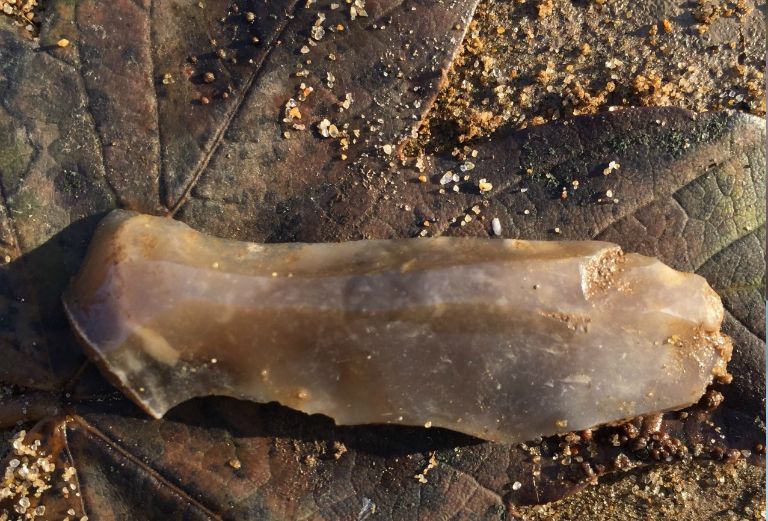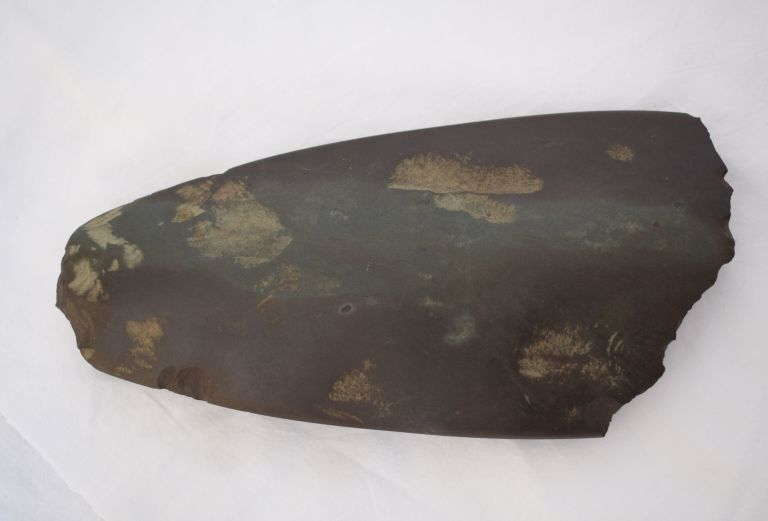
Written by Alexis Haslam, community archaeologist.
On the 15th of February, experimental archaeologist James Dilley will be running a flint knapping workshop in the education centre here at Fulham Palace. This is a workshop you definitely don’t want to miss!
So what exactly is flint knapping, and why have we got a specialist coming in to run a session on-site? Well, in short, knapping is the ancient art of making flint tools, and we have rather a lot of evidence for it taking place at Fulham Palace.
Now I’m no expert on the subject, but I do know a nice flint when I see one! As part of the archaeological publication I am currently working on, all of our prehistoric material has been analysed by the prehistoric specialists Barry Bishop and Jon Cotton. So I shall bow to their far superior knowledge and relay some of their discoveries.

Since 1972, archaeological excavations at the Palace have recovered some 1,829 struck flints from the site. This is one of the largest flint collections as yet found in urban London which means that Fulham Palace was one busy place in the dim and distant past. Effectively, the current grounds occupy what was an island on the River Thames, with the then much wider and shallower river fordable over to Putney. This made it a very attractive place for visitors with plenty of available food, timber and reed beds, as well as lots of lovely flint to get chipping away at.
Although most of our material has been recovered from much later deposits rather than, as we say, ‘in situ’, the sheer quantity of material suggests that the site was a very significant place. Sadly we rarely get to dig deep enough at the Palace to get down to those prehistoric horizons, but these redeposited flints can tell us an awful lot about the past.
Our earliest tools date to the Early Mesolithic which was about 10,000-7,500 BC. People were nomadic and transient back then, but we have material covering the whole Mesolithic Period, right up to the Late Mesolithic to Early Neolithic transition of c. 4,000 BC. One of the nicest finds actually came from the allotments in the form of a transverse axe or adze head, which you can see on display in our museum. This was a small mattock like tool and would have been used for woodworking, the felling of trees, as a chisel or wedge as well as for digging. Tools of this type are often found in river valleys and along spring lines which has led to the suggestion that they may have been used to make dug-out canoes.
Fast forward a bit to the Late Mesolithic Early Neolithic transition (c. 4,000-3,000 BC) and people were becoming less transient as farming and animal husbandry began to be established. Again we have another very nice ground or polished axe head in our museum which was recovered from the vicarage garden. Made of greenstone, this item is likely to have been manufactured in the Cumbrian Lake District, so it certainly travelled some distance to get to Fulham. This really makes you think about the networks of trade that must have existed at the time. Again, the majority of these axe head types within London have been recovered from the River Thames, suggesting that they may have had more significance than their simple use as a tool. Other flints recovered from our site during this period are wide-ranging in terms of typology, indicating that numerous different activities were being undertaken on the island at this time.
So, now that you’re more familiar with flint and it’s importance, and if you fancy honing your inner prehistoric knapping skills, book your ticket now and get cracking. No flaking out now, it’s bound to be a rocking session!